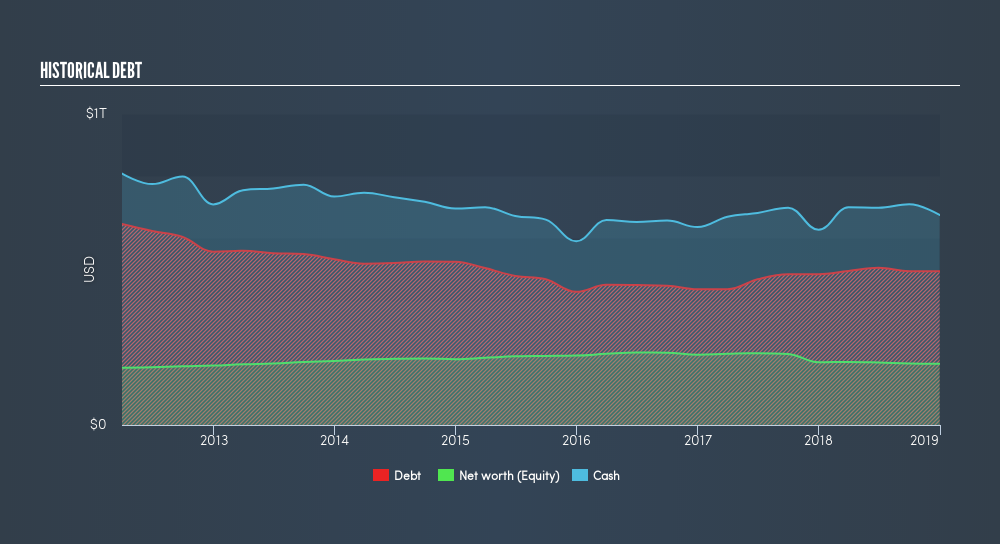
As a US$143b market capitalisation bank, Citigroup Inc. (NYSE:C) is well-positioned to benefit from the improving credit quality as a result of post-GFC recovery. Economic growth fuels demand for loans and affects a borrower’s ability to repay which directly impacts the level of risk Citigroup takes on. As a consequence of the GFC, tighter regulations have led to more conservative lending practices by banks, leading to more prudent levels of risky assets on their balance sheets. It is relevant to understand a bank’s level of risky assets on its accounts as it affects the attractiveness of its stock as an investment. Today I will be taking you through three metrics that are useful proxies for risk.
Check out our latest analysis for Citigroup

What Is An Appropriate Level Of Risk?
Citigroup may be taking on too many risky loans if it is over-exposed to bad debt. Generally, loans that are “bad” and cannot be recovered by the bank should make up less than 3% of its total loans. When these loans are not repaid, they are written off as expenses which comes out directly from Citigroup’s profit. Since bad loans make up a relatively small 0.52% of total assets, the bank may have stricter risk management, or its risks may not have had time to materialise yet.Does Citigroup Understand Its Own Risks?
Citigroup’s ability to forecast and provision for its bad loans indicates it has a good understanding of the level of risk it is taking on. If the level of provisioning covers 100% or more of the actual bad debt expense the bank writes off, then the bank may be relatively accurate and prudent in its bad debt provisioning. With a non-performing loan allowance to non-performing loan ratio of 348.18%, the bank has extremely over-provisioned by 248.18% compared to the industry-average. We wonder if this might indicate the bank is expecting to incur further non-performing loans in the near future.
How Big Is Citigroup’s Safety Net?
 Citigroup profits from lending out its various forms of borrowings and charging interest rates. Deposits from customers tend to carry the lowest risk due to the relatively stable interest rate and amount available. The general rule is the higher level of deposits a bank holds, the less risky it is considered to be. Citigroup’s total deposit level of 59% of its total liabilities is within the sensible margin for for financial institutions which generally has a ratio of 50%. This indicates a prudent level of the bank's safer form of borrowing and a prudent level of risk.
Citigroup profits from lending out its various forms of borrowings and charging interest rates. Deposits from customers tend to carry the lowest risk due to the relatively stable interest rate and amount available. The general rule is the higher level of deposits a bank holds, the less risky it is considered to be. Citigroup’s total deposit level of 59% of its total liabilities is within the sensible margin for for financial institutions which generally has a ratio of 50%. This indicates a prudent level of the bank's safer form of borrowing and a prudent level of risk. Next Steps:
How will C’s recent acquisition impact the business going forward? Should you be concerned about the future of C and the sustainability of its financial health? The list below is my go-to checks for C. I use Simply Wall St's platform to keep informed about any changes in the company and market sentiment, and also use their data as the basis for my articles.
- Future Outlook: What are well-informed industry analysts predicting for C’s future growth? Take a look at our free research report of analyst consensus for C’s outlook.
- Valuation: What is C worth today? Has the future growth potential already been factored into the price? The intrinsic value infographic in our free research report helps visualize whether C is currently mispriced by the market.
- Other High-Performing Stocks: Are there other stocks that provide better prospects with proven track records? Explore our free list of these great stocks here.
We aim to bring you long-term focused research analysis driven by fundamental data. Note that our analysis may not factor in the latest price-sensitive company announcements or qualitative material.
If you spot an error that warrants correction, please contact the editor at editorial-team@simplywallst.com. This article by Simply Wall St is general in nature. It does not constitute a recommendation to buy or sell any stock, and does not take account of your objectives, or your financial situation. Simply Wall St has no position in the stocks mentioned. Thank you for reading.
About NYSE:C
Citigroup
A diversified financial service holding company, provides various financial product and services to consumers, corporations, governments, and institutions.
Flawless balance sheet established dividend payer.
Similar Companies
Market Insights
Community Narratives





